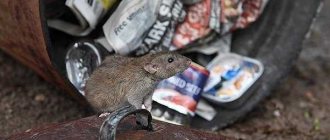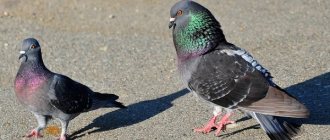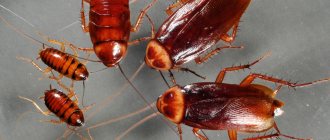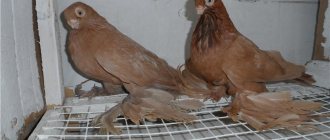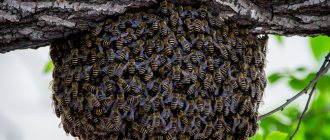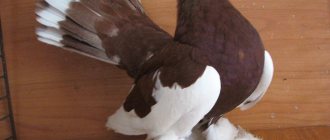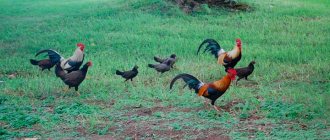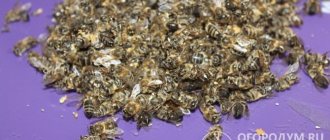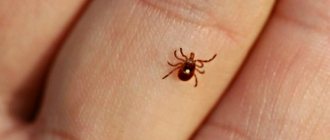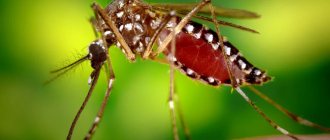Home » Articles about pigeons » How long do pigeons live at home?
The question of how long pigeons live does not have a clear answer, since this period is largely determined by the environment and living conditions. For example, birds of southern latitudes have a better chance of long life than those that live in cold climates, and domestic birds live longer than their relatives from parks and squares.
What affects the lifespan of pigeons
Modern pigeons are classified into domestic and wild. The latter group includes those who live:
- in natural habitat;
- in places of human settlement.
Pigeons have long chosen city streets and squares as a convenient place to live. Thanks to their proximity to humans, they have plenty of food and water, and the chances of dying from predators are much less than in the wild. Unlike urban free pigeons of the highlands or steppe plains, they are more careful and timid, because life there is much more complex and dangerous.
A wild pigeon lives two to three times less than a domestic pigeon from a dovecote. Ornithologists came to these conclusions based on the results of many years of observations. This difference is partly explained by the fact that when breeding new breeds, breeders select individuals with maximum vitality indicators.
Diet
The wild pigeon eats what it finds. If in the summer he receives an abundance of greens, grains, berries and insects, then with the onset of the cold season there is barely enough food to survive. A poor diet leads to a deficiency of vitamins and minerals in the body, as a result of which it weakens and becomes more susceptible to disease.
The feathered inhabitants of the city are a little more lucky in this regard. People feed them all year round, but if not, the birds can eat from the trash. Another question is how healthy such food is, given the fact that many foods consumed by urban birds are not part of their natural diet.
The situation is completely different for the owner's pigeons. Breeders take into account their physiology, so they make sure that the birds eat a complete, balanced and healthy diet at any time in their lives. This is important because the diet changes when the pigeon:
- barely born;
- undergoes the molting process;
- is going through a stage of growth and development;
- enters puberty.
In addition, when forming diets, the breed characteristics of birds, as well as the goals of their breeding, are taken into account.
If you prepare balanced food for pigeons with your own hands, you will need many components. It is much easier to use ready-made diets developed with the participation of certified bird feeding specialists. Such mixtures can be purchased at a pet store or ordered on specialized Internet sites.
Health
The lifespan of pigeons largely depends on the functionality of the immune system. Weakened birds are less resistant to the effects of pathogens, so they are more likely to suffer and die from infection.
Wild pigeons are in close contact with other birds, including migratory birds, which bring with them various “overseas” ailments. Overcoming long distances, pigeons themselves end up in territories with a different climate and ecosystem. Often this entails infection with “foreign” strains of bacteria and viruses against which there is no protection. As a result, the birds die without living even a third of the lifespan measured by nature.
City street pigeons may live a little longer. The cause of their death is often the regular consumption of bread, meat, vegetable and fish waste, which disrupts the functioning of the digestive system, and therefore the body as a whole. Gastrointestinal disorders, combined with the effects of infection, annually cause mass deaths of urban birds.
Lifestyle
If you observe a little the behavior of ordinary city pigeons, you will notice that these birds have a very pugnacious character. It often happens that larger individuals drive their smaller relatives away from food without ceremony. Clashes between pigeons are also common, sometimes leading to death.
And here the dove “teaches life” to the sparrow.
Otherwise, pigeons spend all their time either sitting on tree branches (or poles, roofs of houses, high-voltage power lines) or looking for a snack.
How long do pigeons live?
Taking into account the influence of risk factors on pigeons in different habitats, and also taking into account data obtained as a result of long-term monitoring, ornithologists came to the conclusion that:
- wild pigeons live no more than 3-8 years;
- birds living with pigeon breeders can reach an age of 20 years or more.
How long city pigeons live depends on the quality of their diet, as well as on the climatic and epizootic situation in the region.
Long-lived pigeons
The longest-lived individual among pigeons was recognized as the 25th pet of the British woman V. Whittingham, who turned 25 years old in 2013. It is unlikely that he would have lived so long if a compassionate woman had not saved him in due time.
By the way, the feathered centenarian was not the only bird of Mrs. Whittingham. She kept several pigeons, one of which lived 22 and the other 23 years.
Habitats
Almost everywhere, except, of course
Antarctica and the polar pole. Interestingly, there were times when the number of pigeons on our planet reached 5 billion individuals, although most of them died out due to deforestation in North America.
The largest variety of different species of pigeons is present in South America and Australia, where these birds live in tropical rainforests. And species such as the rock pigeon (which is what we most often see on the streets of our cities) live over a very wide geographical range.
How to extend the life of a pigeon
In order for the inhabitants of the dovecote to live long, be strong and healthy, they should:
- feed them with multi-component grain mixtures, fresh grass and young cereal sprouts;
- do not feed foods that show signs of fermentation and rotting;
- exclude rye, lupine and oats from the diet of birds;
- give plenty of fresh water;
- do not feed the birds scraps from the master’s table;
- keep pigeons in cages or houses where the temperature never drops below 0 ° C;
- regularly clean and disinfect the dovecote, as well as the surrounding area and equipment;
- carry out vaccinations and prevent bird diseases in accordance with the recommendations of a veterinarian;
- prevent decorative pigeons from becoming inactive, periodically giving them the opportunity to fly;
- promptly identify sick birds and remove them from the flock;
- if symptoms of health problems appear in pigeons, show them to a veterinarian, and then carry out treatment in full accordance with his instructions;
- When purchasing new pets, keep them in quarantine before placing them in the flock.
Trying to save weakened and sick pigeons from the street, people bring them home. Before you decide to take such a step, you should keep in mind that:
- It is hardly possible to independently diagnose and remove a sick bird without special education. That is why it should be shown to a veterinarian before adopting it;
- Urban birds, which include pigeons, are carriers of infectious diseases dangerous to humans - toxoplasmosis, salmonellosis, tularemia and others;
- After treatment, an adult bird can be released into the wild, and it will easily return to its habitat. It's more difficult with young people. A nursing pigeon that comes to people at an early age will most likely die in the city.
As an alternative, bird lovers living in high-rise buildings set up dovecotes in the attic. With proper care and feeding, tame pigeons can live there for quite a long time.
Enemies in nature
In natural conditions, pigeons have plenty of enemies. First of all, these are other feathered predators that attack them right in the air: falcon, eagle,
hawk, kite and some other birds. On the ground, terrestrial predators are waiting for them: martens, ferrets, foxes and, of course, ordinary domestic cats.
How to find out the age of a pigeon
The breeder must know exactly the age of his birds, since many exterior features, as well as breeding characteristics, are directly related to it. For example:
- representatives of decorative breeds reach the best condition by the age of 3 and maintain it for another 2-4 years. Then the body wears out, and by the age of 8 years it becomes unsuitable for producing high-quality offspring;
- Athleting pigeons gain ideal shape and show maximum performance from the 2nd to 5-6 years of life.
As a rule, at the peak of their physical prime, birds also demonstrate the best reproductive qualities. At this time, they give birth to strong and healthy offspring, which, like their parents, subsequently delight the breeder with external beauty and excellent results.
While the average lifespan of domestic pigeons is 15 years, the aging process, regardless of the breed, begins at 10 years of age.
Inexperienced breeders who do not know how to determine the age of a chick or an adult pigeon can use the following table
Types, photos and names
As we wrote above, zoologists now count 35 species of pigeons + 2 species are unfortunately extinct today. Next we will describe some species that we think are interesting.
Dodo
He is also a dodo pigeon, just one of the extinct species of pigeons. And it became extinct thanks to the efforts of the largest predator on Earth - man. Living on the island of Mauritius, the Mascarene Islands and Rodrigues, the dodo had no natural enemies. He also did not fly, swam and ran poorly, reached 1 meter in height and laid only one egg per clutch. With the arrival of Europeans on these islands, the dodo was completely destroyed by them. Because of its gullibility, hunting it was not difficult, and dogs, cats and pigs brought to the islands actively devoured the eggs of this bird.
Rock pigeon
This type of pigeon could also be called the common pigeon, since this is what we most often see on the streets of our cities, squares, etc. It is widespread almost everywhere where people live, although initially this species lived only in Europe and Asia, Over time, it spread to both Americas, Africa and Australia.
Klintukh
This type of pigeon belongs to the wild pigeons. It has a bluish plumage, a neck with a greenish tint, a red craw and gray-blue wings. It lives in Africa, China, Turkey, Kazakhstan and a number of Middle Eastern countries.
crowned pigeon
Also refers to wild pigeons. It lives in the tropical forests of South America, Africa, Australia and a number of islands, such as New Guinea. The crowned pigeon got its name due to its specific crest, which is able to rise and fall depending on the mood of the bird.
Wood Pigeon
The pigeon pigeon, along with the crowned pigeon, is one of the largest representatives of the pigeon family. It differs from other pigeons in its neck, which has a bright greenish tint. Distributed in Europe and Asia.
Belgian pigeon
More precisely, the Belgian carrier pigeon; it is pigeons of this species that have proven themselves to be the best feathered postmen. They differ from other pigeons in their speed, endurance and excellent terrain awareness.
How to determine the sex of a pigeon
Many characteristics of pigeons that are important for a breeder are determined not only by the age, but also by the gender of the pet. Among them:
- appearance (for ornamental breeds);
- productivity (for meat breeds);
- flight qualities (for sporting birds).
Sometimes only an experienced poultry farmer can distinguish a female from a male by appearance. However, there are features that make it possible for a beginner to find out the sex of a bird with a high degree of probability. So for the male:
- the head is larger than that of the female
- the beak is blunt and thickened, while the dove’s beak is more elegant and pointed;
- the radiance of the plumage is strongly expressed, but in females it is barely noticeable;
- the cere is better developed.
When palpating the bones of the area, they are determined to be closed and motionless. For comparison, in the female they are slightly apart, which is necessary for successful oviposition.
Besides:
- when you try to pull the male’s beak, he resists, unlike the dove;
- if you take a pigeon by the wings and stroke its belly, the “guy” will begin to raise his paws, but the “lady” will not;
- two pigeons in one cage will certainly start a fight, the females will sit in the corners, and in opposite-sex pairs the male will begin courtship.
In representatives of certain breeds, external gender differences are very noticeable. Eg:
- meat-producing males are much larger than females;
- male kosmachs have darker colored scutes than their female counterparts;
- Russian and Bukhara trumpeters sing loudly and for a long time, attracting females, whose arias are shorter and intermittent;
In Texan pigeons, the gender is clear from childhood - females grow long down, and males grow short.
Both among older birds and among chicks, it is easier to distinguish a female from a male by comparison. If there is only one chick in the nest, which often happens in pedigree birds, its gender can only be understood as it grows.
Reproduction
Pigeons are monogamous birds and create their families once and for all. While courting a female, the male spreads his tail, takes a stance, and in every possible way swells and spins around his chosen one. During this peculiar mating dance, pigeons coo. Sometimes a pair of love doves clean each other's wings and, touching their beaks, create some semblance of a kiss.
When a pair mates, the male mounts the female, maintaining balance with his wings. After this, a pair of pigeons builds a nest in some secluded place, where the female will soon lay eggs. In a year, a female can make up to 8 clutches, each of which will contain from 1 to several eggs.
The female hatches the eggs, although the male father can also replace her for a short time. Usually after 16-19 days, pigeon chicks are born, blind and with yellow down. In the first days, the parents feed them with burps from their crops, then they begin to produce seeds. Pigeon chicks grow and develop very quickly; within a month they acquire the ability to fly and become practically adult pigeons.
Video
And in conclusion, an interesting documentary about pigeons.
Author: Pavel Chaika, editor-in-chief of Poznavaika magazine
When writing the article, I tried to make it as interesting, useful and high-quality as possible. I would be grateful for any feedback and constructive criticism in the form of comments on the article. You can also write your wish/question/suggestion to my email [email protected] or Facebook, with respect, the author.
Author page
Keeping at home
To keep pigeons at home, the first thing you need to do is take care of the proper arrangement of the dovecote. When building it, it is necessary to take into account the breed of pigeons that will be kept there. So, for example, for postal and sporting breeds, it is necessary to provide devices for convenient takeoff and good landing. And decorative pigeons need more territory for walking. The dovecote should be kept in a place with natural sunlight and clean air. There must be good ventilation.
The dovecote should be equipped with a drinking bowl with fresh and clean water and a feeding trough. Also, pigeons must have special perches and places for nests.
